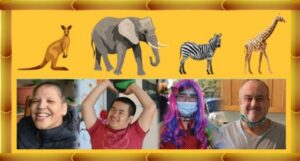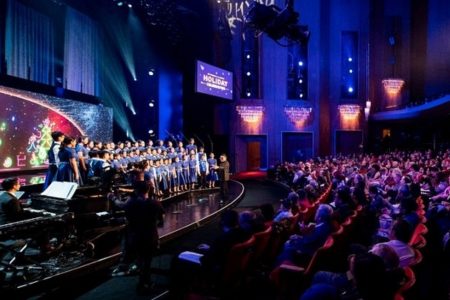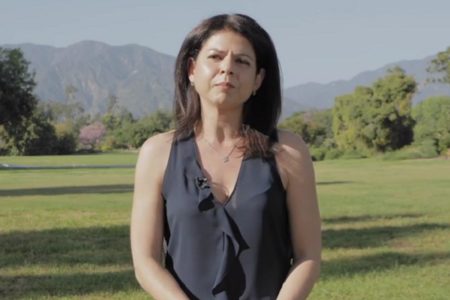
In 1865, the United States had just ended the bloodiest and most painful war in its history. The vicious Civil War conflict had torn the nation asunder, and now Reconstruction had come. America was rebuilding, reconsidering, even reimagining.
Though brother had been pitted against brother, America was still the greatest country in the world, and American initiative and ingenuity were admired and praised.
But what to do with all that new energy and optimism?
Jules Verne zeroes in on fictional Baltimore inventor J.T. Maston, who knows that Union artillery designers and scientists of the Baltimore Gun Club of the victorious North are in search of some new endeavor, and Maston’s best friend, Captain Barbicane (also figment of Verne’s fertile imagination), has a simple idea.
“Let’s get those scientists and engineers to build a 900-foot long cannon and use it to launch the first projectile to the Moon!,” he suggests, to much “huzzah!”all around.
The fanciful tale is the basis of the Jules Verne novel, From the Earth to the Moon, which long captured the imagination of self-admitted musical nerds Cole Remmen, a UC Santa Barbara PhD student, in theater studies, and his brother, Grant Remmen, a Caltech alum and theoretical physicist at The Kavli Institute for Theoretical Physics (KITP), a research institute of the University of California, Santa Barbara. KITP is a renowned institute for theoretical physics and brings theorists in physics and related fields together to work on topics at the forefront of theoretical science.
Yes, it all gets pretty nerdy.
In 2018, the two brothers combined their longtime love of everything musical and everything scientific, began to write “From the Earth to the Moon,” their own musical version of the fantastic Verne saga, which will open April 15, at Ramo Auditorium at Caltech. It was their second such achievement, or over-achievement, if you will, after composing “Boldly Go,” a musical parody based on “Star Trek,” which was mounted at Caltech in 2016.
“Part of what makes ‘From the Earth to the Moon’ really exciting,” said Grant in a recent interview, “is that, yes, it’s a classic Jules Verne novel, but it’s one that hasn’t been, explored as much as say, ‘20,000 Leagues under the Sea’ or ‘Around the world in 80 Days.’”
Grant continued, “And what’s unique is that the story actually takes place in the United States, which a lot of Verne’s works do not, since he was aFrench author, and yet, he is capturing the American psyche, as well as all of these scientific ideas.”
“He was a great admirer of American ingenuity and optimism,” Grant added. “And that really comes through in the book. And, that was something we were really trying to highlight in the show, this uplifting story of technological problem solving.”
More than a story of J.T. Maston and the Baltimore Gun Club’s ambitious effort to fire something at the moon, the musical story of achievement obviously mirrors the brother’s own paths.
It’s one thing to achieve academic excellence. Test well, work hard, apply yourself, and the odds it will happen increase. Artistic success can be a far more formidable task. Art and creativity don’t come with test scores and ratings, it’s far more complex than that.
Then to see your works performed by a major American university twice, is clearly a bullseye of a moon shot. In 2016, the brothers wrote and staged “Boldly Go!,” a musical parody of “Star Trek,” which was a mainstage production at Caltech.
Neither Grant nor Cole are strangers to achievement, however. In 2012, while a student in the University of Minnesota Honors Program, Grant was awarded a prestigious $250,000 Hertz Fellowship to support his future graduate studies for five years. The Hertz Fellowship is considered to be the nation’s most prestigious and generous support for graduate education in applied sciences and engineering.
Meanwhile, Grant is doing that whole Theoretical Physics thing at KITP at UC Santa Barbara, with 44 research works under his belt.
Said Cole of their second musical, “It’s incredible to see it come to life. Because we write these songs and write this script and it’s something that exists in our heads or, among our family and friends that have heard it, and you send it off and it goes out into the world and it takes on a life of its own. And it’s really kind of magical to see that come to life.
Both Cole and Grant credit Caltech Director of Theater Arts Brian Brophy, and the university itself, for their trust and success in staging these musicals.
Brophy proudly admits that the staging carried with it some unique requirements.
The production team had to build a thirteen-foot element to represent the 900-foot cannon that would fire at the moon, along with coordinating a cast of 19 people, who all dance, act, and sing.
But to Brophy, it’s all a parallel to scientific achievement itself.
“That’s what this is, you know?,” he said, “And it ends with us going to another planet, and returning back to earth and looking at the ingenuity of humankind and being able to celebrate that technological prowess and that curiosity to go forward into the future, and to make a better future and to do it in a way that’s authentic and believable.”
That work and achievement is similar to the work of the everyday scientist, says Brophy.
“Laboratories are places, like repositories of truth,” he began. “They’re not necessarily working for glory. They’re just really working on experiments and things that they want to see to make the world better in some way. But it’s also just the work, the day-to-day laborist intentionality that sciences have, and the chemists, the astronomers, the biologists, the geologists have, that they’re working towards something that maybe they’re not quite sure what it is, but they’re doing that daily work. And that daily work isn’t often recognized by the public.”
As Brophy happily expanded on the thought, “For me, the big part is to find that authentic voice that is relatable, that brings the audience into our work. It brings the audience in a way that’s inviting. It’s like, ‘It’s okay to be skeptical. In fact, it’s a cornerstone of science, the inquiry is skepticism . So, of course, we’re doing this research.”
Brophy concluded, “And if you want to come in and see what we’re doing, we’re open. Whether you’re a metallurgist or an engineer or an astronomer or a digger or a geologist, we’re inviting you into this world that we’ve created, and the boys, the brothers, have created this world that we’re trying to inhabit with joy, and a ferocity of curiosity and a ferocity of intentional joy-making. Because that’s what it is.”
“From The Earth to the Moon,” opens April 15 at Ramo Auditorium, on the Caltech campus. More information is available at https://events.caltech.edu or (626) 395-4652.









